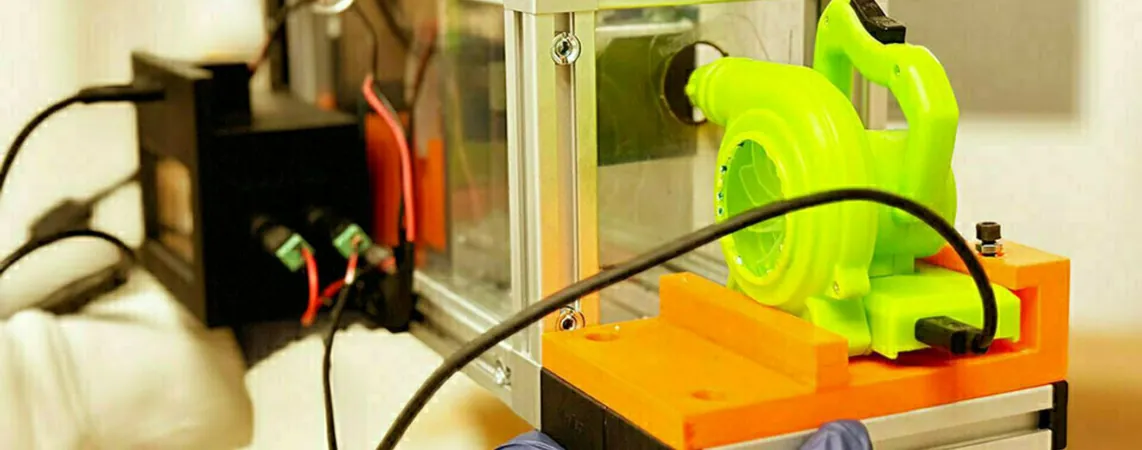
Revolutionary Device Makes Airborne Disease Detection Affordable and Efficient!
2025-06-04
Author: Arjun
Meet ABLE: The Game-Changer in Airborne Disease Detection
A groundbreaking innovation is set to transform how we detect airborne hazards. Introducing ABLE, a compact and budget-friendly device, developed by Jingcheng Ma, an assistant professor at the University of Notre Dame, alongside researchers from the University of Chicago. This remarkable device, measuring just four by eight inches, promises to revolutionize the collection and detection of airborne risks, and its effectiveness has been showcased in the prestigious journal, Nature Chemical Engineering.
Immediate Benefits for Hospitals and Vulnerable Populations
The potential applications for ABLE are immense, particularly in healthcare settings. It enables the direct identification of viruses, bacteria, and even nanoplastics in the air, offering a less invasive method compared to traditional blood draws. This is especially crucial for fragile infants in neonatal units, who stand to gain the most from non-invasive testing.
Unlocking the Mystery of Airborne Biomarkers
“Detecting important biomarkers in the air is akin to finding a needle in a haystack,” asserts Ma, who was the lead author on the study. These biomarkers, which our bodies emit when fighting off pathogens, exist at incredibly low concentrations—sometimes at parts per billion—making them notoriously challenging to detect.
From Air to Liquid: A Ingenious Approach
Ma’s innovative thought process sparked a fascinating idea: what if these airborne biomarkers could be condensed into liquid form? Through his research, he found that passing air through water vapor allows for the effective capture of these molecules in water droplets, even when they are present in minuscule amounts. By doing so, the need for expensive machinery like mass spectrometers is eliminated.
A Low-Cost Solution for Efficient Detection
Constructed for less than $200, the ABLE device works by drawing in air, infusing it with water vapor, and cooling it until it forms droplets on microscopic silicon spikes. This ingenious mechanism concentrates contaminants, making them easier to test in a designated reservoir.
Future Innovations: Miniaturizing ABLE for Greater Impact
Ma’s research team, the Interfacial Thermofluids Lab (ITL), is on a mission to compact ABLE further, aiming for portability in various environmental and healthcare monitoring systems. Their collaboration with community partners aims to extend this innovative technology to monitor the health of vulnerable infants in neonatal care.
A Commitment to Accessible Research
“I’m passionate about what I call ‘budget research’—using simple, low-cost components to achieve significant breakthroughs,” says Ma. His vision is clear: create impactful tools that everyone can afford and access. With ABLE, that vision is becoming a reality.
 Brasil (PT)
Brasil (PT)
 Canada (EN)
Canada (EN)
 Chile (ES)
Chile (ES)
 Česko (CS)
Česko (CS)
 대한민국 (KO)
대한민국 (KO)
 España (ES)
España (ES)
 France (FR)
France (FR)
 Hong Kong (EN)
Hong Kong (EN)
 Italia (IT)
Italia (IT)
 日本 (JA)
日本 (JA)
 Magyarország (HU)
Magyarország (HU)
 Norge (NO)
Norge (NO)
 Polska (PL)
Polska (PL)
 Schweiz (DE)
Schweiz (DE)
 Singapore (EN)
Singapore (EN)
 Sverige (SV)
Sverige (SV)
 Suomi (FI)
Suomi (FI)
 Türkiye (TR)
Türkiye (TR)
 الإمارات العربية المتحدة (AR)
الإمارات العربية المتحدة (AR)